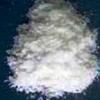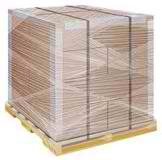SDS of Benzoic Acid BP Ph Eur USP FCC Food Grade AR ACS Reagent Manufacturers
CAS Number 65-85-0
Benzoic Acid BP Ph Eur USP FCC Food Grade AR ACS Reagent Manufacturers.
Benzoic Acid SDS, Safety Data Sheet
MSDS, Material Safety Data Sheet 29-Aug-20
1. Product Identification
Product Name & Other Names: Benzoic Acid or Benzenecarboxylic acid or benzeneformic acid or phenyl carboxylic acid or phenyl formic acid or dracylic acid.
CAS No.: 65-85-0
EINECS EC Number: 200-618-2
Molecular Weight: 122.12
Chemical Formula: C6H5COOH
Relevant uses and uses advised against (if any): Industrial Manufacturing.
2. Hazards Identification
GHS, Globally Harmonized System Classification in accordance with 29 CFR 1910
Classification according to Regulation (EC) No 1272/2008
Skin corrosion/irritation (Category 2) H315
Eye damage (Category 1), H318
Specific target organ toxicity, repeated exposure (Category 1) H372
Labeling according GHS USA & Regulation (EC) No 1272/2008
GHS Label Elements  Corrosive |
GHS Label Elements |
Signal Words: Danger
Hazard statements:
H315 Causes skin irritation.
H318 Causes serious eye damage.
H372 Causes damage to organs (Lungs) through prolonged or repeated exposure if inhaled.
Precautionary statements:
P260: Do not breathe dust/fume/gas/mist/vapors/spray.
P262 Do not get in eyes, on skin, or on clothing.
P264 Wash skin thoroughly after handling.
P270 Do not eat, drink or smoke when using this product.
P280 Wear protective gloves/protective clothing/eye protection/face protection.
P314 Get Medical advice/attention if you feel unwell.
P302+352: IF ON SKIN: Wash with soap and water.
P332+313: If skin irritation occurs: Get medical advice/attention.
P305+ P351 + P338 IF IN EYES: Rinse cautiously with water for several minutes. Remove contact lenses, if present and easy to do. Continue rinsing.
P337+P313 If eye irritation persists: Get medical advice/ attention.
P360 Rinse immediately contaminated clothing and skin with plenty of water before removing clothes.
3. Composition/Information on Ingredients
Product Name & Other Names: Benzoic Acid or Benzenecarboxylic acid or benzeneformic acid or phenyl carboxylic acid or phenyl formic acid or dracylic acid.
CAS No.: 65-85-0
EINECS EC Number: 200-618-2
4. First Aid Measures
Inhalation: If inhaled, remove to fresh air. If not breathing, give artificial respiration. If breathing is difficult, give oxygen. Get medical attention.
Ingestion: Give several glasses of water to drink to dilute. If large amounts were swallowed, get medical advice.
Skin Contact: Wash exposed area with soap and water. Get medical advice if irritation develops.
Eye Contact: Check for and remove any contact lenses. In case of contact, immediately flush eyes with plenty of water for at least 15 minutes. Cold water may be used. Get medical attention.
5. Fire Fighting Measures
Fire: Flash point: 121C (250F) CC
Auto ignition temperature: 570C (1058F)
Explosion: Fine dust dispersed in air in sufficient concentrations, and in the presence of an ignition source is a potential dust explosion hazard. Minimum exposable concentration 0.011 g/l. Vapor may explode if ignited in an enclosed area. Vapor from molten benzoic acid may form explosive mixture with air.
Fire Extinguishing Media: Water spray, dry chemical, alcohol foam, or carbon dioxide.
Special Information: In the event of a fire, wear full protective clothing and NIOSH-approved self-contained breathing apparatus with full face piece operated in the pressure demand or other positive pressure mode. At high temperatures under fire conditions, it may produce toxic or irritating fumes. Fire-extinguishing work is done from the windward and the suitable fire-extinguishing method according to the surrounding situation is used. Uninvolved persons should evacuate to a safe place.
6. Accidental Release Measures
Personal precautions, protective equipment, and emergency procedures: Ventilate area of leak or spill. Avoid breathing dust/fumes/gas/mist/vapors/spray. Use individual protective equipment (waterproof boots, suitable protective clothing, safety glasses, etc.). Restrict unprotected personnel from the area. Prevent any contact with hot surfaces. Do not approach facing the wind. Do not touch the spilled material.
Environmental precautions: Do not let the product enter drains, soil, or water sources.
Methods and materials used for containment Cleanup procedures and Storage: Contain spilled material. Cover with an inert, non-combustible absorbent material, (e.g. sand, earth, diatomaceous earth, vermiculite). Vacuum or sweep-up and remove to an approved disposal container. Neutralize the residue with a dilute solution of sodium carbonate. Finish cleaning by spreading water on the contaminated surface and allow to drain as per law.
7. Handling and Storage
Precautions for safe handling: Apply according to good manufacturing and industrial hygiene practices. Ensure proper ventilation. In case of insufficient ventilation, wear suitable respiratory equipment. Wash thoroughly after handling. Do not drink, eat, or smoke while handling. Avoid contact with skin, eyes, and clothing. Minimize dust generation. Avoid breathing dust/fumes/gas/mist/vapors/spray. Avoid contact with eyes, skin, and clothing. Keep container tightly closed. Avoid ingestion and inhalation. Use individual protective equipment (waterproof boots, suitable protective clothing, safety glasses, etc.). Prevent any contact with hot surfaces.
Conditions for safe storage, including any incompatibilities: Store in cool, dry, and ventilated area away from heat sources and protected from sunlight in tightly closed original container. Keep air contact to a minimum. Store protected from heat, sparks and ignition sources and incompatible materials. Avoid contact with skin and eyes. Avoid inhalation of dust/mist/vapor. Do not store with incompatible materials like strong oxidizing agents and metals. Keep in a well closed container stored under cold to warm conditions, 2 to 40 C, (36 to 104F). Isolate from any source of heat or ignition. Isolate from oxidizing materials. Isolate from flammable materials.
8. Exposure Controls/Personal Protection
Airborne Exposure Limits: None established.
Ventilation System: A system of local and/or general exhaust is recommended to keep employee exposures as low as possible. Local exhaust ventilation is generally preferred because it can control the emissions of the contaminant at its source, preventing dispersion of it into the general work area.
Personal Respirators (NIOSH Approved): For conditions of use where exposure to dust or mist is apparent and engineering controls are not feasible, a particulate respirator (NIOSH type N95 or better filters) may be worn. If oil particles (e.g. lubricants, cutting fluids, glycerin, etc.) are present, use a NIOSH type R or P filter. For emergencies or instances where the exposure levels are not known, use a full-face positive-pressure, air-supplied respirator.
Skin Protection: Wear protective gloves and clean body-covering clothing.
Eye Protection: Use chemical safety goggles and/or full face shield where dusting or splashing of solutions is possible. Maintain eye wash fountain and quick-drench facilities in work area.
Other Control Measures: Maintain good housekeeping in work area. Handle in accordance with good industrial hygiene and safety practice. Wash hands after handling.
9. Physical and Chemical Properties
Appearance: White, needle-like crystals.
Odor: Faint pleasant odor.
Odor threshold: Not available.
pH: 2.8 (saturated solution @ 25 0C)
Relative density: around 1.32
Boiling Point: 249C (480F)
Melting Point: 122C (252F)
Flash point: Not available.
Auto-ignition temperature: Not available.
Decomposition temperature: Not available.
Upper/lower flammability or explosive limits: Not available.
Vapor Density (Air=1): 4.2
Vapor Pressure (mm Hg): 1 @ 96C (205F)
Evaporation rate: Not available.
Flammability (solid, gas): Not available.
Partition coefficient: n-octanol/water: Not available.
Solubility: 0.29 g / 100 ml. water; sinks in water.
Viscosity: Not available.
10. Stability and Reactivity
Stability: Stable under ordinary conditions of use and storage.
Hazardous Decomposition Products: Emits toxic vapors and gas including phenol, benzene, and carbon monoxide when heated to decomposition.
Hazardous Polymerization: Will not occur.
Incompatibilities: Oxidizing agents, bases, and metals. Water solutions can react with metals to produce hydrogen gas.
Conditions to Avoid: Heat, flame, ignition sources, dusting, and incompatibles.
11. Toxicological Information
Oral rat LD50: 1700 mg/kg; LC50 rat > 26,000mg/L/Hr.; irritation skin rabbit: 500 mg/24H mild; eye rabbit: 100 mg severe; investigated as a mutagen.
Carcinogenicity: No component of this product present at levels greater than or equal to 0.1% is identified as probable, possible, or confirmed human carcinogen by IARC.
Mutagenic Effects: Not available.
Teratogenic Effects: Not available.
Developmental Toxicity: Not available.
Reproductive Effects: No information available.
12. Ecological Information
Environmental Fate: When released into the soil, Benzoic Acid may leach into groundwater. When released into the soil, Benzoic Acid is expected to readily biodegrade. When released into the soil, this material is expected to have a half-life between 1 and 10 days. When released into water, Benzoic Acid is expected to readily biodegrade. When released into the water, this material is expected to have a half-life between 1 and 10 days. When released into water, this material is not expected to evaporate significantly. This material has a log octanol-water partition coefficient of less than 3.0. This material may bio accumulation to some extent. When released into the air, this material is expected to be moderately removed from the atmosphere by wet deposition. When released to the air, this material is subject to removal from the atmosphere by gravitational settling.
Environmental Toxicity: No information found.
13. Disposal Considerations
Whatever cannot be saved for recovery or recycling should be managed in an appropriate and approved waste disposal facility. Processing use or contamination of this product may change the waste management options. State and local disposal regulations may differ from federal disposal regulations.
14. Transport Information
DOT USA, TDG Canada & ADR/RID Europe: Not regulated.
IMDG/IMO: Not regulated.
IATA/ICAO: Not regulated.
15. Regulatory Information
SARA 311/312: Immediate Health Hazard. See section 2.
16. Other Information
DISCLAIMER: The information and recommendations set forth herein are presented in good faith and believed correct as of the date hereof. It is compiled from various sources and it is not necessarily all inclusive nor fully adequate in every circumstance. In addition, these suggestions should not be confused with nor followed in violation of applicable laws, regulations, rules or insurance requirements applicable. This MSDS sheet is intended only as a guide to the appropriate precautionary handling of the material by a properly trained person using this product. Individuals receiving the information must exercise their independent judgment in determining its appropriateness for a particular purpose.

Benzoic Acid Pure BP Ph Eur USP FCC Food Grade & ACS AR Analytical Reagent Grade Manufacturers:
Muby Chemicals & Associated Cos
BANDEALI BUILDING, CHINCHBUNDER, MUMBAI 400009, INDIA.
TEL: 91-22-23728264. Gujarat & Mumbai India.
info(At the Rate i.e. @)mubychem(dot)com

Copyright and Usual Disclaimer is Applicable
Last updated
29-aug-22

Exports to USA UAE Europe South Africa Tanzania Kenya Uganda Egypt Nigeria Turkey Brazil Chile Argentina Dubai Cameroon Guatemala Mexico etc.
Barter
They who love thee on this earth, keep calling on thee and chanting thy beads
Lest thou forgetest.
They assign the credit of their hard work to your blessings
They keep you amused.
They come to thy temple with baskets of fruits, as if you were a glutton
They deny the same to their children.
They offer you milk for a bath and burn the ghee
They hardly understand the meaning of it.
They bring gold and diamonds. They come with beating of drums
They love to advertise their offerings.
They offer you a small bribe as advance for booty, called lottery
They love to dream.
I do not bow down at your door
I do not bargain for booty
Your promise of the heaven does not lure me
Your hell-fire does not scare me
I do not even know the proper method of prayer
I do not offer any thing to you
Ages have gone by and I have not seen you my lord
Yet my love for you keeps waiting for you.

